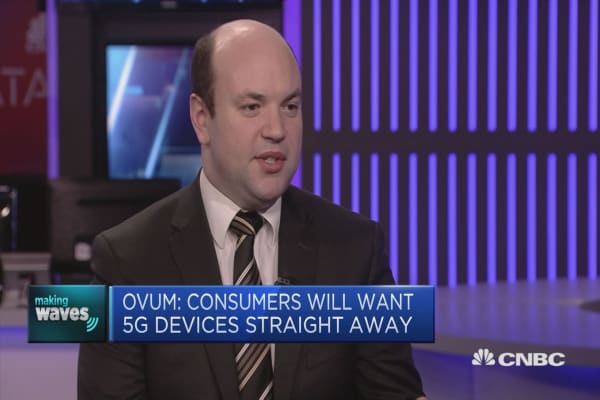- Research from analyst firm Gartner showed a 5.6 percent drop in year-on-year smartphone sales in the fourth quarter of 2017
- Consumers are holding on to their phones longer and are also increasingly unimpressed with the frequency and diversity of new models, experts have suggested.
Seamus Conwell; special to CNBC.com
CNBC.com
Global smartphone sales saw their first year-on-year fall in history, according to new data, with analysts blaming a number of new user habits for the decline.
Research from analyst firm Gartner Thursday showed a 5.6 percent drop in sales in the fourth quarter of 2017, compared with the same period in 2016.
Replacement cycle
Anshul Gupta, research director at Gartner pointed to the lengthening of the replacement cycle as one cause. That's a trend backed up by HYLA, a company that runs the smartphone trade-in programs for industry giants such as AT&T, Sprint and Verizon. HYLA has seen a number of trends emerge that may help explain the stalling smartphone market.
Device trade-in is playing an increasing role in all smartphone upgrades — and increasing the affordability of all devices — especially in the premium category. The company said data for 2017 showed U.S. consumers owned a device for 2.59 years, or 945 days before trading it in. That's 78 days longer than in 2016 which came in at 2.38 years or 867 days. With users in a major market holding on to a better phone for longer, new device sales will inevitably suffer.
Meanwhile, some analysts suggest that consumers are holding onto their phones longer because their new devices are dramatically dropping in price shortly after purchase. Biju Nair, CEO at HYLA Mobile thinks the smartphone market may begin to emulate that of new cars. "Despite only being available for a couple of months, the iPhone X is now achieving just $600 at trade-in — highlighting the dramatic depreciation of high-end devices," he told CNBC via email.
Innovation
Consumers are also increasingly unimpressed with the frequency and diversity of new models. A lack of innovation and incremental benefits are failing to entice new buyers to the market, a better camera and better connection quality is no longer enough for potential purchasers to reach into their pocket.
5G and the internet of things will be touted as the platform for the next spectrum of upgrades and features at Mobile World Congress in Barcelona next week, but that's still a way off from
being a smartphone savior. U.K. mobile analytics firm OpenSignal believes there is still life in the old 4G dog yet. CEO Brendan Gill said: "There is room for improvement in 4G as well. Telcos still need to invest in their 4G networks on an ongoing basis to provide a reliable and high-quality service to their customers."
Apple's micro financing options along with a strong trade-in market will continue to offer access and affordability to high-end devices. However, with Samsung launching a new flagship device to take on the iPhone X at Mobile World Congress, profit protection in a falling sales environment may mean the sky's the limit for premium prices.



